Artificial Intelligence (AI), more than a mere technological buzzword, embodies the convergence of innovation, cognition, and the relentless pursuit of mimicking human intelligence. At its core, AI refers to the development of computer systems capable of performing tasks that typically necessitate human intelligence.
These tasks encompass problem-solving, understanding natural language, recognizing patterns, and making decisions. AI transcends the conventional boundaries of programming, ushering in a new era where machines learn, adapt, and evolve, challenging our preconceptions of what is achievable.
The Significance of AI: Catalyzing a Technological Revolution
The significance of AI extends far beyond its technical intricacies; it marks a paradigm shift in how we interact with technology and, consequently, with the world. AI is not just a tool; it is a catalyst for innovation across diverse industries. From healthcare and finance to education and entertainment, AI permeates various facets of our lives, promising efficiency, precision, and novel capabilities.
The significance of AI lies in its potential to redefine how we work, live, and engage with the digital landscape, offering solutions to complex problems and pushing the boundaries of what we thought possible.
Historical Background of AI: Tracing the Roots of Intelligent Machines
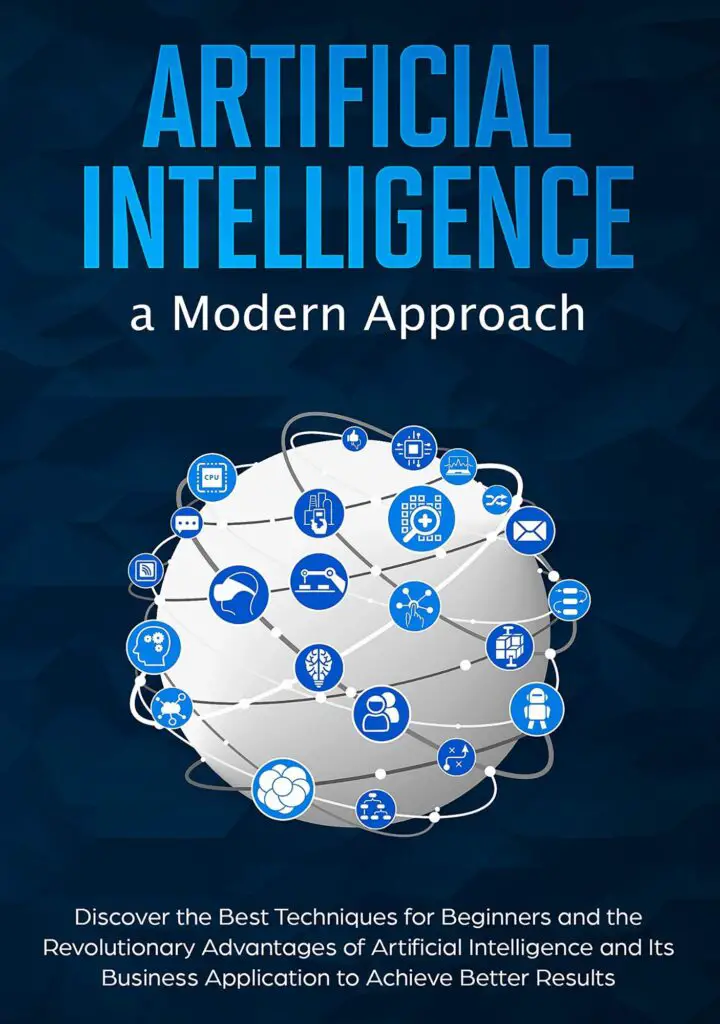
To comprehend the present and anticipate the future, we must embark on a historical journey through the roots of Artificial Intelligence. The concept of intelligent machines has tantalized human imagination for centuries, from ancient myths of automatons to the philosophical musings of the Enlightenment era.
However, the formal birth of AI can be traced to the mid-20th century when visionaries and pioneers like Alan Turing and John McCarthy laid the groundwork for the development of intelligent machines. This historical context becomes the cornerstone, illuminating the evolution of AI from fanciful aspirations to tangible, transformative technologies.
The Evolution of AI
The evolution of AI is a narrative woven with scientific breakthroughs, paradigm shifts, and relentless innovation. From the symbolic reasoning approaches of the early years to the advent of machine learning and neural networks, the journey of AI has been marked by milestones that pushed the boundaries of what was once thought possible.
Today, we find ourselves in an era where AI is not just a concept but a tangible reality integrated into our daily lives in ways we might not even realize. The evolution of AI symbolizes the triumph of human ingenuity over the challenges of emulating intelligence in machines.
As we embark on this exploration, envision AI as more than a technological tool; see it as a dynamic force shaping the future. The definition and evolution of AI become the threads that weave the tapestry of a technological revolution, offering glimpses into a future where machines and humans collaborate in unprecedented ways.
Stay tuned as we unravel further layers, exploring the diverse facets of AI that define the modern era.
Intelligent Agents: Pioneering the Landscape of AI

In the vast domain of Artificial Intelligence (AI), intelligent agents emerge as the architects of autonomous systems, wielding the power to perceive, reason, and act in pursuit of predefined objectives. This section introduces us to the fundamental concepts of intelligent agents, unraveling the intricacies that define their role in the AI ecosystem.
Introduction to Agents in AI: Unveiling the Actors in the AI Drama
In the grand narrative of AI, an agent is not a mere entity but a dynamic actor designed to perceive its environment, make decisions, and execute actions to achieve specified goals. Whether it’s a simple program or a complex robotic system, an agent encapsulates the essence of autonomy, possessing the ability to operate independently within its designated scope.
Understanding the role of agents is akin to peeling back the layers of AI, exposing the inner workings of systems that navigate the complexities of their surroundings.
Agent Architectures: Blueprinting Intelligence
Just as an architect meticulously designs a building, the architecture of an intelligent agent serves as the blueprint for its cognitive capabilities. This section delves into the diverse architectures that govern intelligent agents, each tailored to specific tasks and environments.
From simple reactive architectures to complex deliberative structures, the design choices impact how agents perceive information, make decisions, and execute actions.
Characteristics of Agent Architectures: Crafting the Minds of Machines
The characteristics embedded within agent architectures define the personality of these artificial entities. Reactive agents respond to stimuli with predetermined actions, navigating the immediate environment. Deliberative agents, on the other hand, engage in thoughtful decision-making, considering various options before selecting the optimal course of action.
Hybrid architectures amalgamate these approaches, offering a versatile toolkit for addressing the multifaceted challenges presented in the diverse landscapes of AI.
As we embark on this journey into the realm of intelligent agents, envision them as the virtuosos of the AI symphony, orchestrating a harmonious interaction with their surroundings. From perceiving the world to making informed decisions, intelligent agents epitomize the ingenuity of AI design.
Stay tuned as we further unravel the nuances of agent-based intelligence, exploring how these entities shape the contours of AI evolution.
Problem-Solving Techniques in AI: The Art of Unraveling Challenges
In the vibrant landscape of Artificial Intelligence (AI), problem-solving emerges as the heartbeat, driving machines to decipher complexities and find optimal solutions.
This section embarks on a journey into the art of problem-solving techniques, illuminating the pathways that AI algorithms tread to untangle intricate challenges.
The Algorithmic Symphony: Navigating the World of AI Problem Solvers
Problem-solving in AI is a symphony of algorithms, each note meticulously composed to address specific challenges. This exploration unveils the diverse algorithms that form the backbone of AI problem-solving, from classic methodologies to cutting-edge approaches.
Whether it’s deciphering puzzles, recognizing patterns, or making strategic decisions, these algorithms navigate the labyrinth of possibilities, unraveling solutions with computational finesse.
Search Algorithms: Navigating the Maze of Possibilities
At the core of AI problem-solving lies the intricate dance of search algorithms. These algorithms traverse vast solution spaces, systematically exploring possibilities to find the optimal path.
From depth-first searches delving into the depths of possibilities to breadth-first searches sweeping across the surface, each algorithm brings its unique flavor to the quest for solutions.
Unraveling the nuances of search algorithms is akin to deciphering the roadmap that guides AI systems through the maze of potential solutions.
Heuristics: Guiding Lights in the Shadows of Complexity
In the tapestry of AI problem-solving, heuristics emerge as guiding lights, offering shortcuts and informed decision-making strategies. These rules of thumb expedite the search for solutions, allowing AI systems to navigate complexities with efficiency.
Whether it’s prioritizing certain paths or discarding less promising options, heuristics inject an element of intuition into the computational problem-solving process, mimicking the human ability to make quick, effective decisions.
Optimization: Sculpting Solutions for Maximum Impact
The final brushstroke in the canvas of AI problem-solving is optimization. This process fine-tunes solutions, ensuring they are not just feasible but also optimal in terms of defined criteria.
From minimizing costs to maximizing efficiency, optimization algorithms sculpt solutions to meet specific objectives. The journey through optimization algorithms is a revelation of how AI transcends mere problem-solving, aiming for solutions that are not just adequate but exceptional.
As we delve into the intricacies of problem-solving in AI, we envision it as a grand puzzle where algorithms, heuristics, and optimization techniques converge. The symphony of computational intelligence unfolds, deciphering challenges and sculpting solutions in the ever-evolving landscape of Artificial Intelligence.
Stay tuned as we further unravel the algorithms that empower machines to navigate and conquer the complexities of problem-solving.
Representing Knowledge in AI: Constructing the Foundations of Understanding
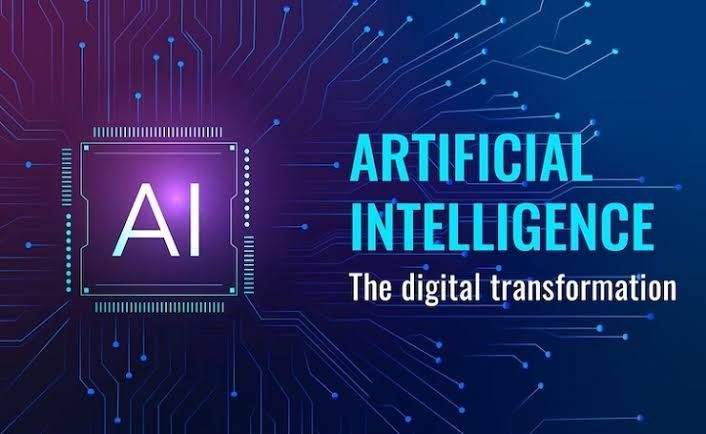
In the vast realm of Artificial Intelligence (AI), the ability to comprehend and represent knowledge is the bedrock of intelligent systems. This section embarks on an exploration of the methodologies and frameworks that AI employs to encapsulate, organize, and understand knowledge.
The Tapestry of Knowledge Representation: Threads of Understanding in AI
Knowledge representation in AI is akin to weaving a complex tapestry of interconnected threads. This section unveils the diverse techniques employed, from symbolic representations like semantic networks and frames to subsymbolic approaches like neural networks.
These methods serve as the scaffolding upon which AI systems construct their understanding of the world, enabling them to navigate the complexities of diverse information.
Logical Reasoning: The Architectural Blueprint of AI Thought
At the heart of AI’s cognitive prowess lies logical reasoning, the architectural blueprint that structures the thought processes of intelligent systems. This exploration dives into the foundations of logical reasoning, where propositions, predicates, and rules form the building blocks of intelligent decision-making.
Whether deducing conclusions from given facts or making inferences based on logical rules, the journey through logical reasoning unveils the inner workings of AI minds.
Inference: Connecting the Dots in the Web of Knowledge
In the intricate web of knowledge, inference serves as the dynamic thread that connects disparate pieces of information. This section delves into the mechanisms of inference in AI, where reasoning moves beyond explicit logical rules to make implicit connections.
Probabilistic reasoning, abductive reasoning, and statistical inference are the tools that enable AI systems to bridge gaps, filling in missing pieces and expanding their understanding through a nuanced web of connections.
As we navigate the landscape of knowledge and reasoning in AI, we envision it as an intellectual terrain where systems not only hold information but actively engage in logical thought processes. The tapestry of knowledge representation and the scaffolding of logical reasoning form the cognitive infrastructure that empowers AI to comprehend, infer, and make informed decisions.
Stay tuned as we unravel further layers of AI cognition, exploring how these systems construct meaning and reason in the pursuit of intelligent understanding.
AI Planning Techniques: Choreographing the Dance of Intelligent Actions
In the orchestration of Artificial Intelligence (AI), planning emerges as the choreographer, directing intelligent agents to navigate complex scenarios and achieve predefined goals. This section embarks on a journey through AI planning techniques, unraveling the methodologies that enable machines to envision, strategize, and execute actions in pursuit of optimal outcomes.
The Dance of Algorithms: AI Planning Unveiled
AI planning isn’t a simple step-by-step process; it’s a dance of algorithms designed to navigate the intricate terrain of decision-making. This exploration unveils classical and modern planning approaches, from classical search-based planners to heuristic and probabilistic methods.
Whether it’s deterministic or stochastic environments, these algorithms become the rhythmic steps that guide AI systems in strategizing and executing actions.
Decision Making in Dynamic Environments: Navigating the Flux of Change
In the dynamic landscape of AI, decision-making takes center stage as systems encounter ever-changing environments. This section delves into the nuances of decision-making in dynamic settings, where adaptability and real-time adjustments become critical.
From Markov Decision Processes (MDPs) to reinforcement learning, AI systems learn to make decisions not only based on current knowledge but also by dynamically updating strategies as the environment evolves.
Problem-Solving Amidst Flux: The Adaptive Intelligence of AI
Dynamic environments pose a challenge to AI systems – the need to solve problems and make decisions amid the flux of change. This exploration unfolds how AI systems employ problem-solving techniques in dynamic scenarios.
Reactive strategies respond to immediate stimuli, while deliberative approaches consider long-term goals. The interplay of these strategies equips AI systems with the adaptive intelligence required to thrive in environments where change is the only constant.
As we delve into the realm of AI planning and dynamic decision-making, envision it as a strategic ballet where algorithms and methodologies become the dancers, harmonizing with the fluidity of ever-evolving environments.
The choreography of AI planning unfolds as systems learn not just to respond but to anticipate, adapt, and strategically maneuver through the complexities of dynamic landscapes. Stay tuned as we further explore the strategic minds in motion, decoding how AI systems plan and make decisions in the dynamic tapestry of intelligence.
Dealing with Uncertainty in AI: The Art of Adapting to the Unknown
In the ever-shifting landscape of Artificial Intelligence (AI), uncertainty emerges as a formidable challenge. This section embarks on a journey through the methodologies and frameworks that empower AI systems to grapple with uncertainty, adapting and making informed decisions in the face of the unknown.
The Unknown: Uncertainty in AI Unveiled
Uncertainty in AI isn’t a mere lack of knowledge; it’s the acknowledgment of the vast expanse of the unknown. This exploration delves into the different facets of uncertainty, from inherent randomness in environments to incomplete information.
Understanding uncertainty becomes pivotal as AI systems venture into real-world scenarios where absolutes are rare, and probabilities take center stage.
Probability Theory: The Language of Uncertainty
Probability theory emerges as the lingua franca for communicating in the realm of uncertainty. This section unveils the foundational principles of probability theory and its role in AI.
From assigning likelihoods to different outcomes to modeling uncertainties with probability distributions, probability theory becomes the compass that guides AI systems through the fog of uncertainty, enabling them to quantify, reason, and make decisions with a nuanced understanding of the probabilities involved.
Bayesian Networks: Weaving Probabilistic Threads of Intelligence
In the intricate tapestry of uncertainty, Bayesian networks stand as elegant weavers of probabilistic intelligence. This exploration delves into the architecture of Bayesian networks, where nodes represent variables, and edges signify probabilistic dependencies.
These networks enable AI systems to model complex relationships, update beliefs based on new evidence, and make decisions by considering the interplay of uncertain factors.
Bayesian networks become the orchestrators of probabilistic reasoning, unraveling the threads of uncertainty into a cohesive narrative of intelligent decision-making.
As we navigate the unknown realms of uncertainty in AI, envision it as a grand symphony where probability theory and Bayesian networks harmonize with the uncertainties of the world.
The adaptive intelligence of AI unfolds as it embraces uncertainty not as a hindrance but as an inherent aspect of the complex environments it navigates.
Stay tuned as we further explore the symphony of probability, unraveling how AI systems deal with uncertainty and orchestrate probabilistic intelligence in their pursuit of informed decision-making.
Machine Learning Fundamentals: The Essence of AI Learning Prowess
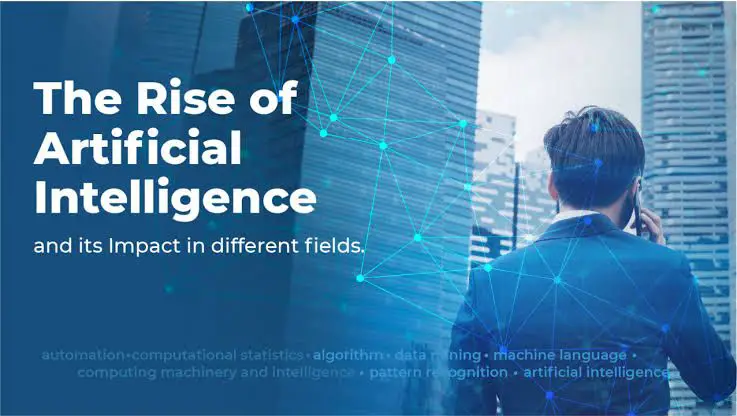
In the intricate tapestry of Artificial Intelligence (AI), machine learning emerges as the dynamic thread that enables systems to learn, adapt, and evolve.
This section embarks on an exploration of machine learning fundamentals, unraveling the core principles that empower AI to glean insights, make predictions, and continuously improve through experience.
The Art of Learning: Machine Learning Unveiled
Machine learning isn’t just a tool; it’s an art form that empowers AI systems to acquire knowledge from data. This exploration delves into the essence of machine learning, where algorithms learn patterns, relationships, and representations from vast datasets.
Whether it’s recognizing faces in images, translating languages, or predicting future trends, machine learning becomes the brushstroke that paints intelligence onto AI canvases.
Supervised Learning: Guided Steps into Intelligence
Supervised learning serves as the foundational stepping stone into the realm of machine intelligence. This section unveils the principles of supervised learning, where algorithms are trained on labeled datasets, associating inputs with corresponding outputs.
From image recognition to natural language processing, supervised learning becomes the guiding force that enables AI systems to generalize knowledge and make informed predictions in new, unseen scenarios.
Unsupervised Learning: Navigating the Uncharted Territories of Knowledge
In the vast sea of information, unsupervised learning becomes the compass that navigates uncharted territories. This exploration delves into the principles of unsupervised learning, where algorithms uncover hidden patterns, group similar data points, and unveil the underlying structure of datasets without explicit labels.
Clustering, dimensionality reduction, and generative modeling become the tools that empower AI systems to glean insights from the raw, unstructured data they encounter.
Reinforcement Learning: The Journey of AI Decision-Making Odyssey
As AI systems embark on decision-making odysseys, reinforcement learning emerges as the compass that guides them through dynamic environments. This section explores the principles of reinforcement learning, where algorithms learn to make sequential decisions by interacting with an environment and receiving feedback in the form of rewards.
From game-playing agents to robotic control, reinforcement learning becomes the methodology that equips AI systems with the adaptive intelligence required to navigate complex, uncertain scenarios.
As we unravel the threads of learning in AI, envision it as a journey where algorithms evolve from novices to experts, continuously refining their understanding and decision-making capabilities.
The symphony of machine learning fundamentals, supervised learning, unsupervised learning, and reinforcement learning creates a harmonious melody of intelligence in the realm of AI.
Stay tuned as we further explore the intricacies of learning, decoding how AI systems acquire knowledge, adapt to challenges, and pave the way for intelligent decision-making.
Perception in AI: Decoding the Language of Machines
Computer Vision and Image Processing: The Eyes of Artificial Intelligence
In the intricate dance of Artificial Intelligence (AI), perception emerges as the bridge between the physical world and the computational realm. This section embarks on an exploration of how machines ‘see’ and interpret visual data, unraveling the realms of computer vision and image processing.
Computer Vision:
At the forefront of AI perception lies computer vision, a field dedicated to imbuing machines with the ability to interpret visual information. From recognizing objects and patterns to understanding spatial relationships, computer vision algorithms act as the eyes of AI systems.
Imagine the marvel of a machine discerning a cat from a dog in an image or navigating its surroundings through visual data – these are the feats of computer vision, transforming pixels into meaningful understanding.
Image Processing:
Complementing computer vision is the intricate art of image processing, where algorithms sculpt and refine visual data. From enhancing image quality to extracting relevant features, image processing techniques serve as the sculptors that chisel raw visual information into refined structures.
Think of it as the canvas on which AI paints a clearer, more detailed picture of the world.
Speech Recognition and Natural Language Processing: Deciphering the Verbal Tapestry
Beyond the visual realm, perception in AI extends to the auditory and linguistic domains. This section delves into the realms of speech recognition and natural language processing, where machines not only ‘hear’ but also comprehend and respond to the richness of human language.
Speech Recognition:
Imagine a world where machines not only hear spoken words but understand their nuances. Speech recognition in AI enables systems to transcribe spoken language into text and, in advanced stages, comprehend the meaning and context.
From virtual assistants responding to voice commands to transcription services converting spoken words into written form, speech recognition is the auditory sense that brings AI closer to human communication.
Natural Language Processing (NLP):
The pinnacle of AI’s linguistic prowess lies in natural language processing. This field empowers machines not only to understand human language but also to generate coherent responses.
From chatbots engaging in conversations to language translation services breaking down linguistic barriers, NLP transforms text into a medium of interaction, comprehension, and expression for machines.
As we venture deeper into the realms of perception in AI, envision it as a symphony where visual and auditory cues harmonize, and linguistic nuances become the notes of comprehension. Computer vision, image processing, speech recognition, and natural language processing form the senses that allow machines to perceive, interpret, and interact with the world in ways that echo the richness of human perception.
Stay tuned as we further unravel the layers of AI perception, exploring how these systems interpret the complex tapestry of sensory data.
Action and Robotics: Unleashing the Mechanical Symphony of AI
Robotic Architectures and Control: The Choreography of Intelligent Machines
In the grand orchestration of Artificial Intelligence (AI), the domain of action and robotics emerges as the stage where intelligent machines come to life. This section embarks on an exploration of robotic architectures and control mechanisms, delving into the intricate choreography that empowers machines to move, interact, and execute actions in the physical world.
Robotic Architectures:
Imagine the mind of a robot – not a human mind, but a cognitive architecture meticulously designed to process information, make decisions, and orchestrate movements. Robotic architectures in AI are the blueprints that define how these mechanical entities think and act.
Whether it’s reactive architectures responding swiftly to stimuli or deliberative architectures carefully planning each move, the design choices in robotic architectures shape the essence of AI-driven actions.
Control Mechanisms:
The magic of AI in robotics lies in its ability to control physical movements with precision. Control mechanisms govern how robots navigate their surroundings, adjusting to changes in the environment and executing actions seamlessly.
From PID (Proportional-Integral-Derivative) controllers maintaining balance to advanced control algorithms orchestrating complex movements, these mechanisms are the conductors that ensure the fluidity and grace of AI-driven actions.
Autonomous Systems and Robotics in AI: Navigating the Landscape of Independence
As AI systems mature, autonomy becomes the pinnacle of achievement. This section explores autonomous systems and their integration into the realm of robotics, where machines not only perceive and act but also navigate their environments independently.
Autonomous Systems:
Envision a robot capable of making decisions, adapting to unforeseen circumstances, and achieving goals without constant human intervention.
Autonomous systems in AI embody this level of independence. From self-driving cars navigating city streets to drones executing precise maneuvers, autonomous systems are the embodiments of AI, achieving a degree of self-governance driven by sophisticated algorithms and sensor data.
Robotics in AI:
The synergy between robotics and AI is the manifestation of intelligent action. From industrial robots assembling products with precision to robotic arms performing delicate surgeries, the marriage of AI and robotics expands the horizons of what machines can achieve. These applications not only enhance efficiency but also open new frontiers in industries where precision, adaptability, and autonomy are paramount.
As we traverse the landscape of action and robotics in AI, envision it as a grand mechanical symphony where robotic architectures, control mechanisms, autonomous systems, and the marriage of AI and robotics harmonize. The stage is set for machines to not only perceive and understand but also to interact, move, and act with a level of sophistication that mirrors the intricacies of human motion.
Stay tuned as we further unravel the layers of AI in action, exploring the dynamic interplay between intelligent machines and the physical world.
Social Intelligence in AI: Navigating the Human Connection
AI Applications in Social Contexts: Transforming Societal Landscapes
In the expansive realm of Artificial Intelligence (AI), the infusion of social intelligence marks a paradigm shift, transcending mere computation to engage with the intricacies of human interaction. This section embarks on an exploration of AI applications in social contexts, where intelligent systems not only understand but also navigate the complex tapestry of human society.
Social Applications: Picture AI systems seamlessly integrated into the fabric of society, enhancing various aspects of human life. From healthcare and education to entertainment and public services, AI applications in social contexts are the architects of transformative change.
Whether it’s personalized healthcare solutions, AI-driven educational platforms, or social media algorithms shaping digital interactions, these applications weave technology into the very fabric of our social existence.
Human-AI Interaction: The Dance of Technology and Humanity
At the heart of social intelligence lies the nuanced dance of Human-AI Interaction (HAI). This section delves into the dynamics of how humans and intelligent machines communicate, collaborate, and coexist in shared spaces.
Communication: Imagine a world where conversations with AI feel natural, intuitive, and seamless. Human-AI interaction encompasses the communication channels through which we engage with intelligent systems. Natural language processing, gesture recognition, and voice interfaces transform interactions into dialogues, bridging the gap between human expression and AI comprehension.
Collaboration: In collaborative spaces, humans and AI become partners in problem-solving and creativity. Whether it’s co-designing products, generating artistic creations, or optimizing business processes, Human-AI collaboration is the synergy that leverages the strengths of both entities. The result is a collective intelligence where human creativity and intuition merge with AI’s computational power.
Ethical Considerations: Navigating the Moral Compass of AI
As AI integrates into the social fabric, ethical considerations become a critical compass guiding its trajectory. This section explores the ethical dimensions of AI in social contexts, unraveling the challenges and responsibilities that arise when intelligent systems interact with human values.
Privacy and Security: The integration of AI into social spheres raises concerns about privacy and data security. From personalized recommendations to surveillance systems, the ethical use of data becomes paramount. Striking a balance between AI-driven insights and individual privacy is an ongoing challenge that requires careful navigation.
Bias and Fairness: AI systems, when trained on biased data, can perpetuate and even amplify societal biases. Ethical considerations demand a commitment to fairness, transparency, and the continuous scrutiny of AI algorithms to mitigate bias. Ensuring that intelligent systems treat all individuals equitably is an ethical imperative in the pursuit of social intelligence.
Transparency and Accountability: As AI systems make decisions that impact individuals and society, transparency and accountability become ethical cornerstones. Understanding how AI reaches conclusions and establishing mechanisms for accountability are essential components of ethical AI deployment.
As we delve into the realms of social intelligence in AI, envision it as a harmonious integration of technology into the social symphony.
AI applications in social contexts, Human-AI interaction, and ethical considerations form the triad that defines the responsible and impactful role of AI in our interconnected world. Stay tuned as we further explore the delicate interplay between intelligent systems and the intricate dynamics of human society.
Philosophical Foundations of AI: Navigating the Interplay of Mind and Machine
AI and Its Implications on Philosophy: Bridging the Abyss of Understanding
In the ever-evolving tapestry of Artificial Intelligence (AI), the interplay between machines and the human mind sparks profound questions that resonate in the corridors of philosophy. This section embarks on a journey into the philosophical foundations of AI, unraveling the implications that arise when the realms of mind and machine converge.
Philosophical Inquiry: At the heart of AI’s impact on philosophy lies a fundamental inquiry into the nature of intelligence, consciousness, and the essence of being.
As machines exhibit capabilities that mimic human cognition, philosophers grapple with questions about the nature of thought, self-awareness, and the potential emergence of machine consciousness. The dialogue between AI and philosophy transcends mere technological advancement, inviting us to ponder the very fabric of human existence.
Ethical and Societal Considerations in AI Development: Charting the Moral Landscape
With great technological power comes an inherent responsibility. This section delves into the ethical and societal considerations that accompany the development and deployment of AI technologies, exploring the intricate intersections where innovation meets human values.
Ethical Dilemmas: As AI systems integrate into various aspects of society, ethical dilemmas arise. Questions surrounding bias in algorithms, the impact of AI on employment, and the ethical use of AI in decision-making processes become pivotal discussions.
The choices made in the development and deployment of AI technologies reverberate through society, necessitating a careful examination of the moral landscape.
Societal Impact: Beyond the philosophical ponderings, AI’s societal impact becomes a canvas painted with both promise and challenge. From the transformative potential of AI in healthcare and education to concerns about job displacement and privacy invasion, the societal ramifications of AI development unfold.
Navigating this landscape requires a delicate balance between progress and safeguarding the well-being of individuals and communities.
The Human-Machine Nexus: Charting a Course for Ethical AI
The convergence of AI and philosophy is not merely an intellectual exercise; it is a call to action in crafting ethical guidelines that govern the development and deployment of AI technologies. As we stand at the crossroads of innovation and responsibility, the philosophical foundations of AI beckon us to navigate with wisdom, foresight, and a deep understanding of the profound implications on the human experience.
Stay tuned as we delve deeper into the intricate dialogue between AI and philosophy, exploring not only the technological frontiers but also the ethical and philosophical dimensions that shape the evolving relationship between mind and machine.
Emerging Trends in AI: Navigating the Frontiers of Technological Advancement
Current Advancements in AI: The Dynamic Landscape of Innovation
In the dynamic realm of Artificial Intelligence (AI), current advancements propel us into an era where machines continue to surpass previous milestones, redefine possibilities, and weave intricate threads into the fabric of technological innovation.
Machine Learning Dominance: Machine learning stands as the vanguard of AI, driving advancements in predictive analytics, natural language processing, and computer vision. The evolution of deep learning models, particularly neural networks, has propelled AI capabilities to unprecedented heights, enabling systems to learn complex patterns and make nuanced decisions.
Reinforcement Learning Revolution: The rise of reinforcement learning marks a paradigm shift, empowering AI systems to not only learn from data but also through interaction with their environments. This advancement finds applications in fields like robotics, gaming, and autonomous systems, where machines learn by trial and error, refining their strategies over time.
Exponential Growth in Big Data: The symbiotic relationship between AI and big data continues to flourish. The exponential growth of data sources provides the raw material for AI algorithms to refine their models and glean valuable insights. From healthcare diagnostics to personalized recommendations, the fusion of AI and big data reshapes industries and enhances decision-making processes.
Future Directions and Challenges: Navigating the Uncharted Territories
As we gaze into the future, the path of AI unfolds with both promise and challenges. The landscape is rich with possibilities, yet it requires careful navigation to address ethical considerations, societal impacts, and technological hurdles.
Explainable AI and Ethical Considerations: The demand for transparency in AI decision-making processes has given rise to the concept of explainable AI. As models become more complex, ensuring that AI systems can provide understandable explanations for their decisions becomes crucial. Simultaneously, ethical considerations regarding bias, fairness, and responsible AI deployment take center stage, urging the development of guidelines to mitigate potential risks.
Human-AI Collaboration: The future envisions a seamless collaboration between humans and AI, where machines augment human capabilities rather than replace them. This collaborative model finds applications in diverse fields, from healthcare and education to creative endeavors, fostering a symbiotic relationship that leverages the strengths of both humans and machines.
AI in Edge Computing: The integration of AI into edge computing devices ushers in a new era of decentralized processing. This not only enhances the speed and efficiency of AI applications but also addresses privacy concerns by reducing the need for extensive data transmission to centralized servers.
Quantum Computing Impact: The emergence of quantum computing introduces a paradigm shift in AI capabilities. Quantum algorithms have the potential to outperform classical algorithms, unlocking new frontiers in optimization, machine learning, and cryptography. However, harnessing the power of quantum computing poses significant technical challenges.
As we stand at the crossroads of current advancements and future potential in AI, the journey forward requires a delicate balance between innovation and ethical considerations.
The uncharted territories hold promises of transformative technologies that can reshape industries and elevate the human experience. Stay tuned as we navigate the evolving landscape of AI, exploring the forefront of innovation and confronting the challenges that define the path ahead.
Conclusion: The Uncharted Horizons of Artificial Intelligence Innovation
In the ever-evolving landscape of Artificial Intelligence (AI), our exploration has unveiled current advancements and future trends. Machine learning, especially reinforcement learning, and the symbiosis with big data form the backbone of AI’s current prowess.
Looking forward, explainable AI, ethical considerations, and human-AI collaboration take center stage. The horizon also holds promises with edge computing quantum computing but presents challenges.
As we navigate this dynamic journey, the call is for a harmonious blend of innovation and ethics, steering AI towards responsible and transformative contributions to our collective future.
Discover more from Digital Wealth Guru
Subscribe to get the latest posts sent to your email.
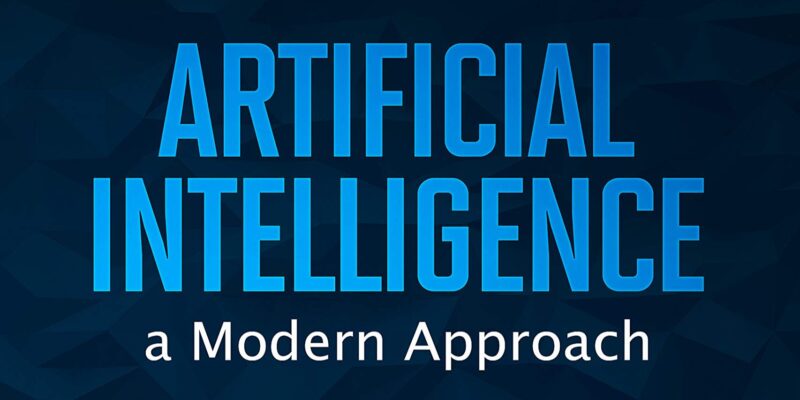




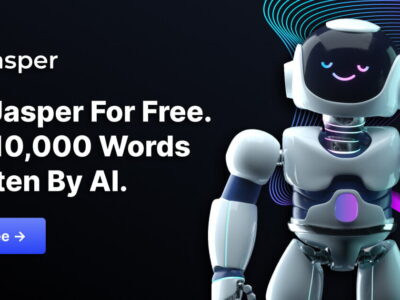


Comments